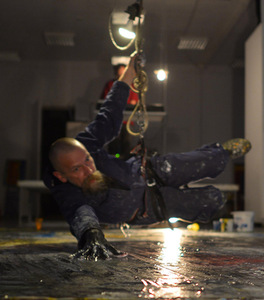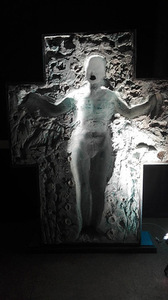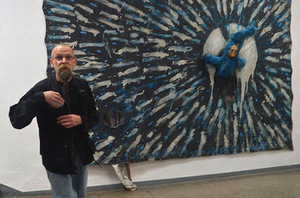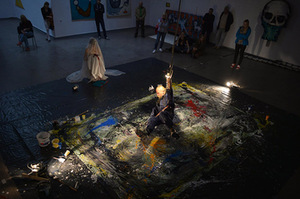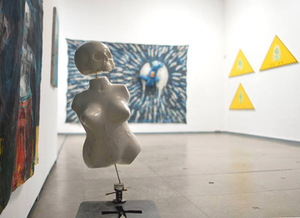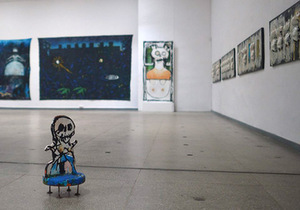Auris Radzevičius, "To get off the ego capsule and open up to infinity" 3
In brief: Auris Radzevičius is a striking, controversial and multifaceted personality; his work is difficult to describe in clear, unambiguous terms. We have met to talk about spaces and skulls, freedom and reality with A. Radzevičius in his creative studio located in the attic of his home.
Artist, using scenography, painting, installation, object, video art, poetry and music naturally connects and mixes them in a creative process. I wanted to know whether it is true that one of the most important things for the artist is space.
According to Auris Radzevičius - inevitably. "After all, I worked in the theatre for so many years. The space is very important. Sometimes it indicates what artworks should be exhibited, how they should be transformed. Exhibition hall is the same kind of space as the theatre box, only proportions differ. The hall, just like the theatre, contains spots that are more effective while others are not, and seem to be dead. When exhibiting works you try to identify those spots, so that your artworks could function."
The leitmotif of skull is repeated throughout the artist's oeuvre. I wanted to know why the artist finds this image important and whether he wants to say anything with it. A. Radzevičius says, "I was asked the same question once by one visitor of my exhibition who presented herself as a doctor. So I also asked her, "What do you see in the mirror? The same skull, only upholstered with some sheet, which changes every moment: grows old, shrinks and gets wrinkled."
Recently Kaunas Film Center Romuva hosted author's installation (Not) Other world, which was about how differently healthy and disabled people perceive the world. I wondered why author was interested in raising these questions.
Author explains, "It was a very interesting task, because a quarter-century ago, I worked at the cultural house of Kaunas Factory for Blind and Visually Impaired (currently, Kaunas Center for Blind and Visually Impaired). The main part of the installation - a large format cross-shaped object's plaster surface had various tiny objects imprinted on it: shells, flowers, light bulbs, chess pieces, and insects. Basically, a person with normal sight who will close his eyes and touch the relief with his fingers, will feel nothing but a rough surface. It is like a visual tool for the sighted to try and find themselves in that sort of state and experience it."
